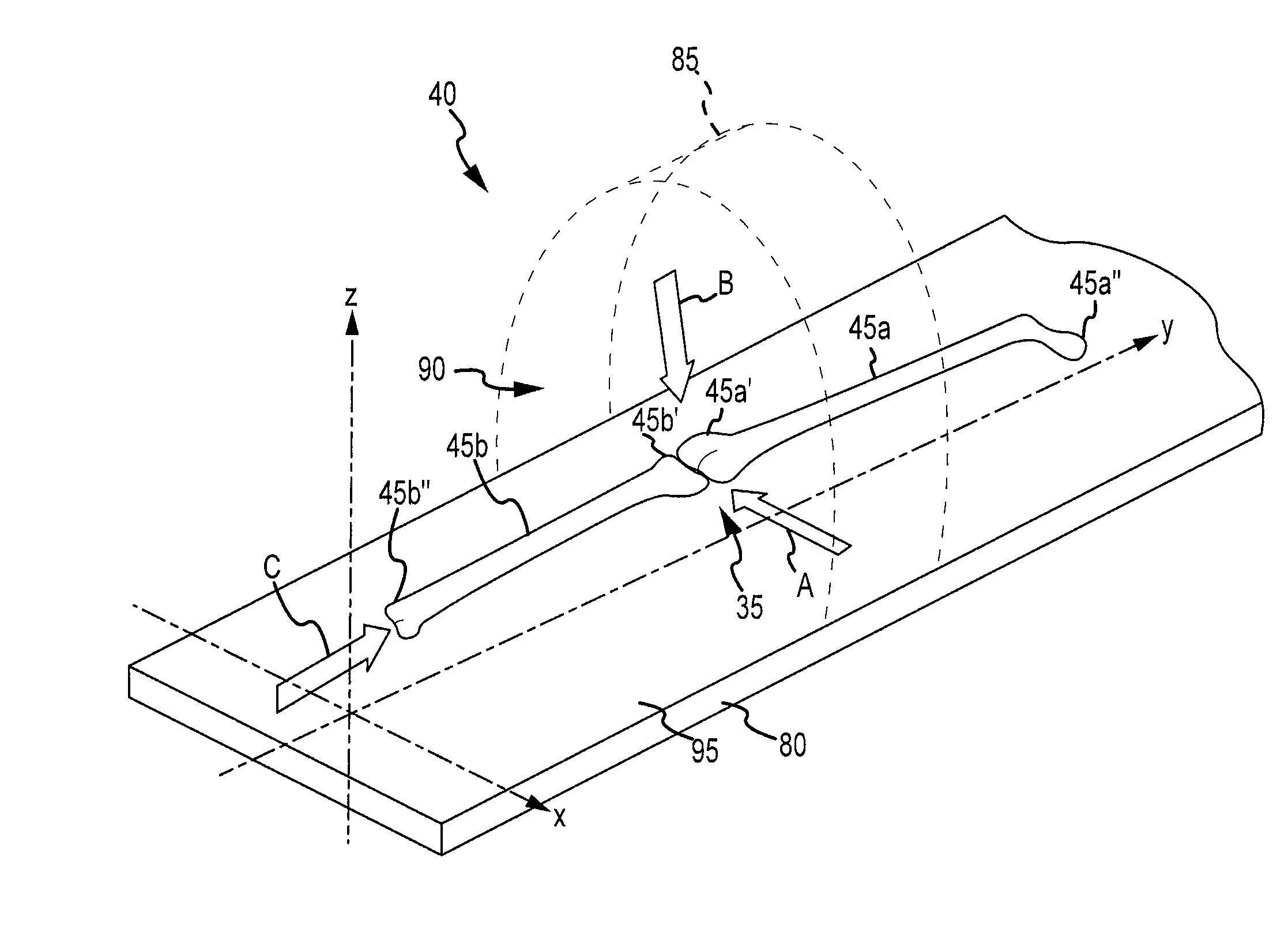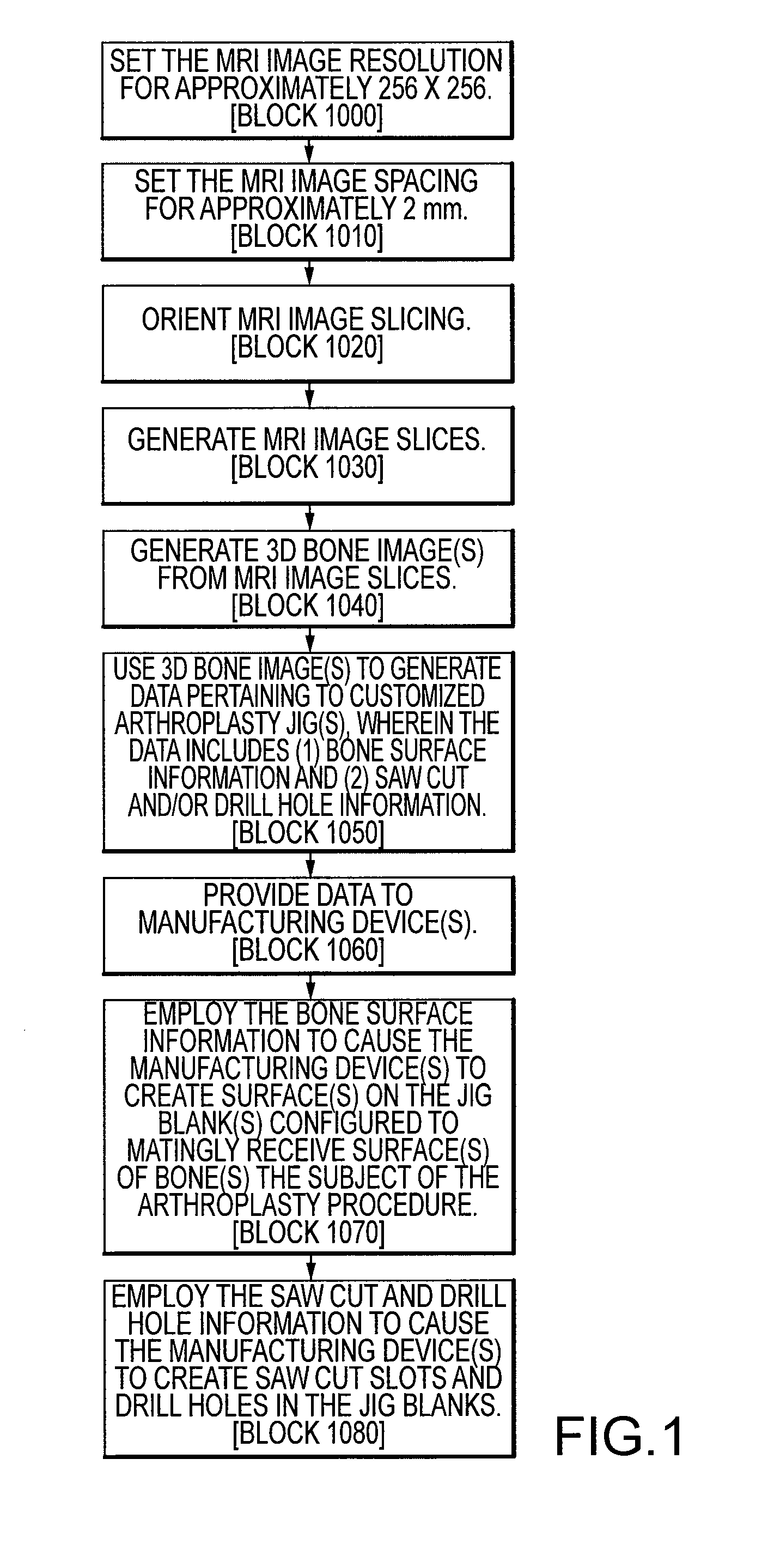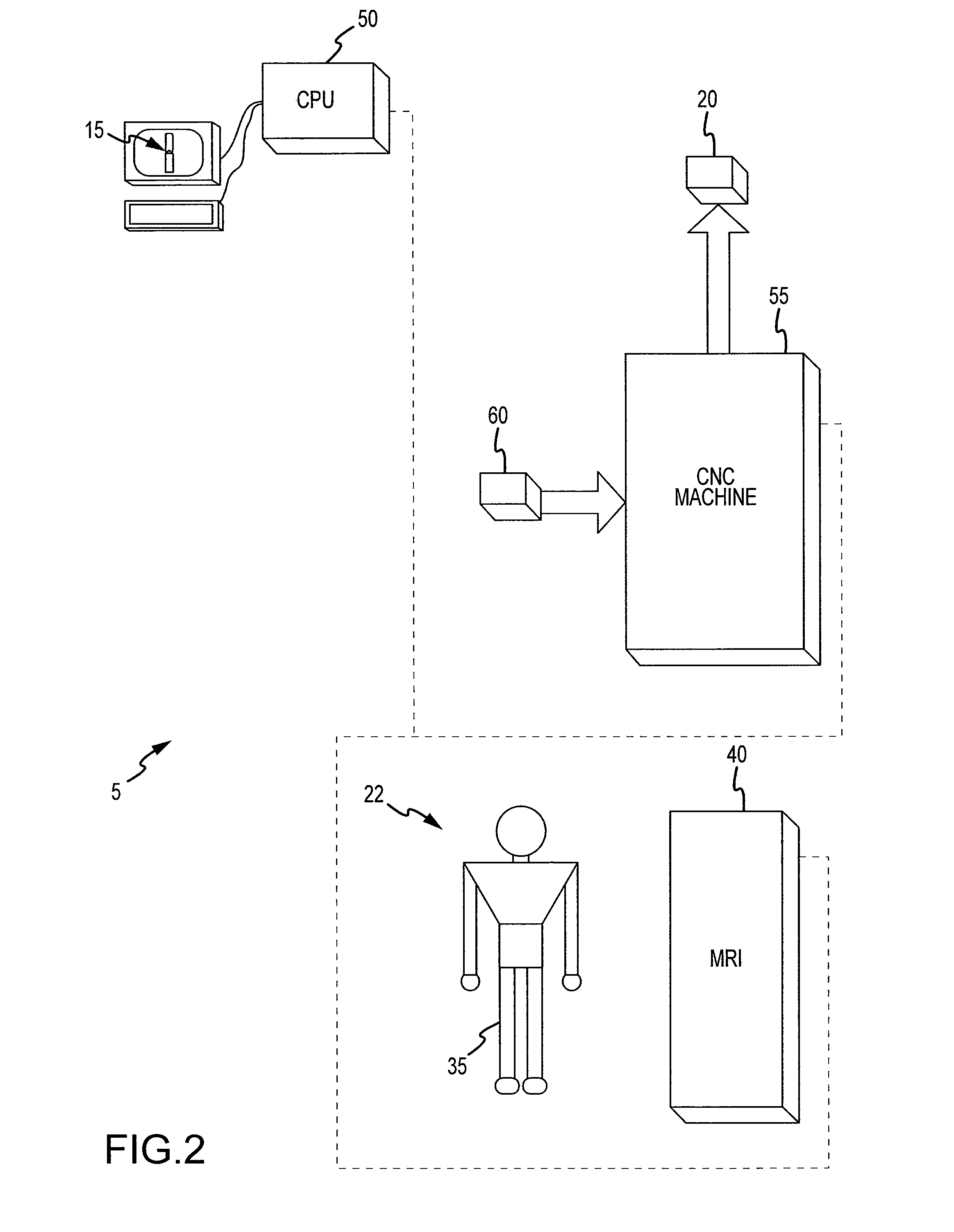Generating MRI images usable for the creation of 3D bone models employed to make customized arthroplasty jigs
a technology of mri and mri scan, which is applied in the field of medical imaging, can solve the problems of increasing the radiation dose to a patient, adverse reactions in some patients, and ct imaging not providing the image resolution of mri
- Summary
- Abstract
- Description
- Claims
- Application Information
AI Technical Summary
Benefits of technology
Problems solved by technology
Method used
Image
Examples
Embodiment Construction
[0032]Disclosed herein is a system and method for generating 2D MRI image slices 10 that are readily and reliably useable in creating 3D bone models 15 used in the generation of customized arthroplasty jigs 20. A MRI image resolution and MRI image slice spacing SS disclosed herein significantly reduce the time required to generate a series of MRI images slices 10, thereby making it possible for a patient 22 to maintain a position completely still for the duration of the MRI imaging process. An image slice orientation method disclosed herein ensures the 2D MRI image slices 10 are readily and reliably useable with a 3D computer modeling program to create 3D bone models 15 used in the generation of customized arthroplasty jigs 20.
[0033]For a discussion of the overall process of turning MRI image slices 10 into a customized arthroplasty jig 20, reference is made to FIGS. 1 and 2. FIG. 1 is a flow chart illustrating a method of creating customized arthroplasty jigs 20 for mating with sur...
PUM
 Login to View More
Login to View More Abstract
Description
Claims
Application Information
 Login to View More
Login to View More - R&D
- Intellectual Property
- Life Sciences
- Materials
- Tech Scout
- Unparalleled Data Quality
- Higher Quality Content
- 60% Fewer Hallucinations
Browse by: Latest US Patents, China's latest patents, Technical Efficacy Thesaurus, Application Domain, Technology Topic, Popular Technical Reports.
© 2025 PatSnap. All rights reserved.Legal|Privacy policy|Modern Slavery Act Transparency Statement|Sitemap|About US| Contact US: help@patsnap.com



